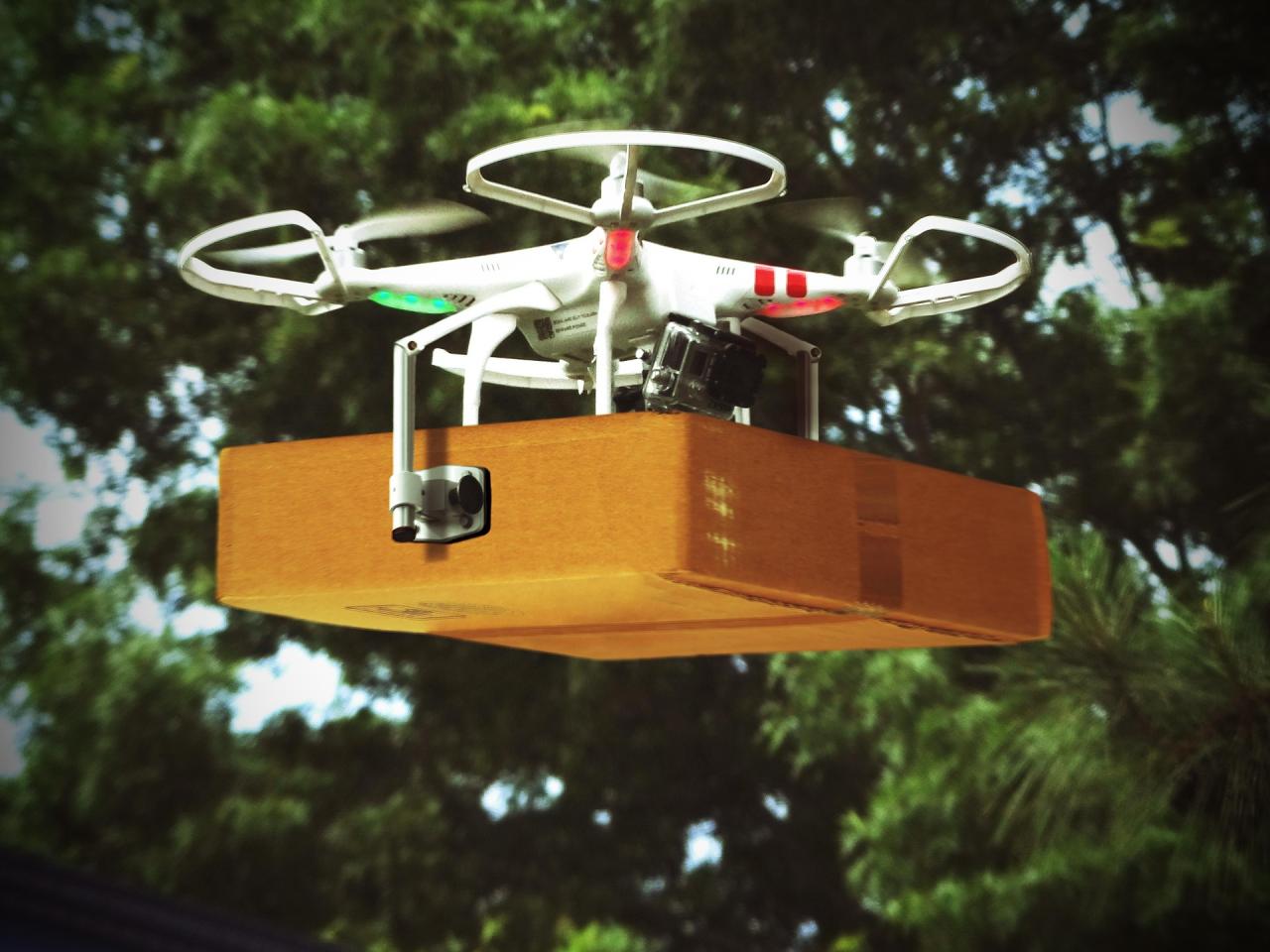Amazon drone delivery locations are rapidly expanding, revolutionizing how we receive packages. This expansion isn’t random; it’s driven by a complex interplay of technological advancements, regulatory hurdles, and customer demand. We’ll explore the current state of Amazon’s drone delivery program, examining the factors influencing location selection, the customer experience, technological aspects, environmental impact, and the exciting future of this innovative delivery method.
From understanding the infrastructure needed to support drone delivery—including airspace regulations and designated landing zones—to analyzing the logistical challenges of different geographical areas, we’ll delve into the intricacies of this cutting-edge system. We’ll also look at how weather conditions affect operations and explore potential improvements to enhance the customer experience, such as faster delivery times and more efficient processes.
Current Amazon Drone Delivery Program Status
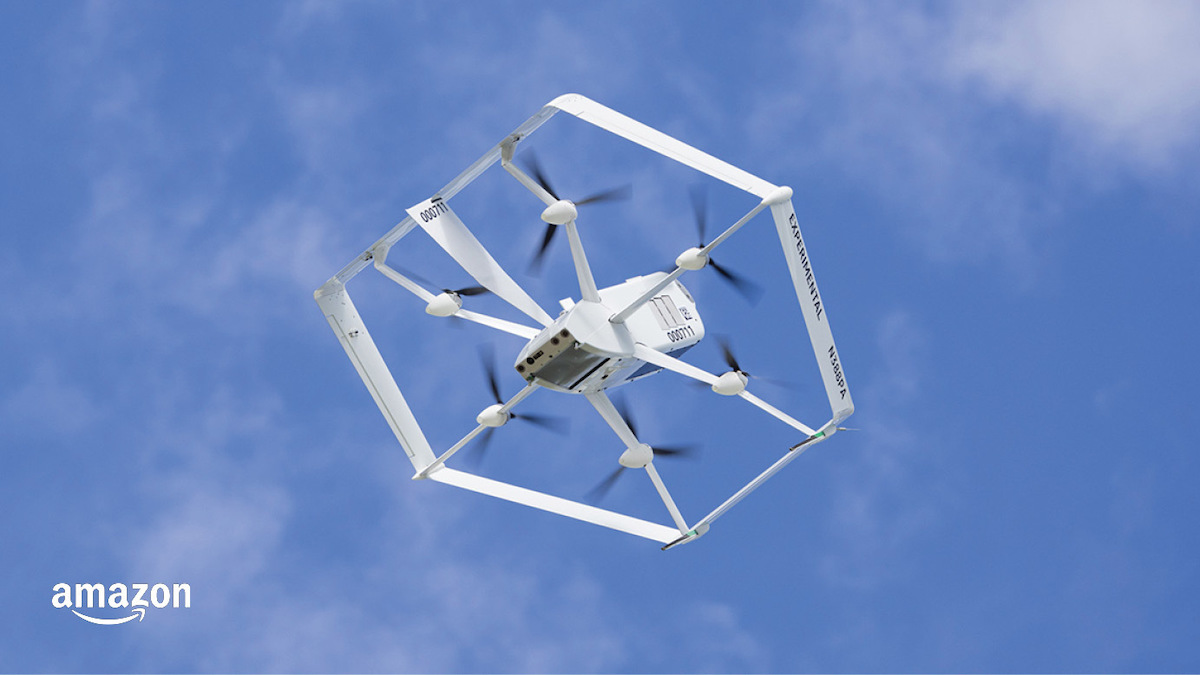
Amazon’s drone delivery program, officially known as Amazon Prime Air, is still in its relatively early stages, but it’s steadily expanding its reach and capabilities. While not yet a widespread service, it represents a significant step towards faster and more efficient delivery methods. The program’s evolution is closely tied to technological advancements, regulatory approvals, and public acceptance.Amazon Prime Air’s geographical reach is currently limited.
It operates in select locations within the United States, primarily focusing on smaller, less densely populated areas where drone operations are easier to manage and integrate with existing infrastructure. The exact number of operational locations and their specific geographic coordinates are not publicly released by Amazon for security and competitive reasons. However, public information indicates that operations are concentrated in areas conducive to drone flight and delivery, minimizing potential risks and complexities.
Eligible Products for Drone Delivery
The types of products currently eligible for Amazon drone delivery are carefully selected to meet weight and size restrictions, as well as safety considerations. Generally, these are smaller, lighter packages containing everyday items such as household goods, over-the-counter medications, and small electronics. Amazon carefully monitors the program and adjusts eligible product categories based on operational experience and technological improvements.
Larger or heavier items, or those requiring special handling, are still delivered via traditional methods.
Infrastructure Requirements for Amazon Drone Delivery
Successful Amazon drone delivery relies heavily on a robust infrastructure that addresses both technological and regulatory aspects. A critical component is the establishment of designated drone delivery locations, which often include specially designed landing zones. These landing zones must meet safety standards, be easily accessible for drones, and be located in areas with minimal interference from obstacles or other airspace users.
Strict adherence to Federal Aviation Administration (FAA) regulations regarding airspace usage, flight paths, and drone operation protocols is essential. This includes obtaining necessary permits and approvals, adhering to altitude restrictions, and implementing robust safety systems to prevent accidents. Furthermore, Amazon invests heavily in sophisticated drone technology, including advanced flight control systems, obstacle avoidance sensors, and secure delivery mechanisms.
Amazon’s expanding drone delivery network is aiming for more locations, but safety is key. Recent incidents highlight the importance of rigorous testing and safety protocols, like what we saw in the news regarding the orlando drone show accident. Understanding these risks helps Amazon refine its drone delivery locations and procedures, ultimately ensuring a safer and more efficient service.
Comparison with Other Drone Delivery Initiatives
Amazon Prime Air is not alone in the pursuit of drone delivery. Several other companies, including Alphabet’s Wing and UPS Flight Forward, are also actively developing and implementing drone delivery services. While the specific technologies and operational strategies may differ, all these initiatives face similar challenges related to regulatory hurdles, technological limitations, and public perception. Amazon’s program, however, benefits from its extensive existing logistics network and customer base, giving it a potentially significant advantage in terms of scalability and market penetration.
A key differentiator lies in the scale of Amazon’s operations and its integration with its broader e-commerce platform, allowing for a more seamless customer experience compared to some smaller, more focused drone delivery companies. The ongoing competition among these various initiatives is driving innovation and accelerating the development of this emerging technology.
Factors Influencing Location Selection for Drone Delivery: Amazon Drone Delivery Locations
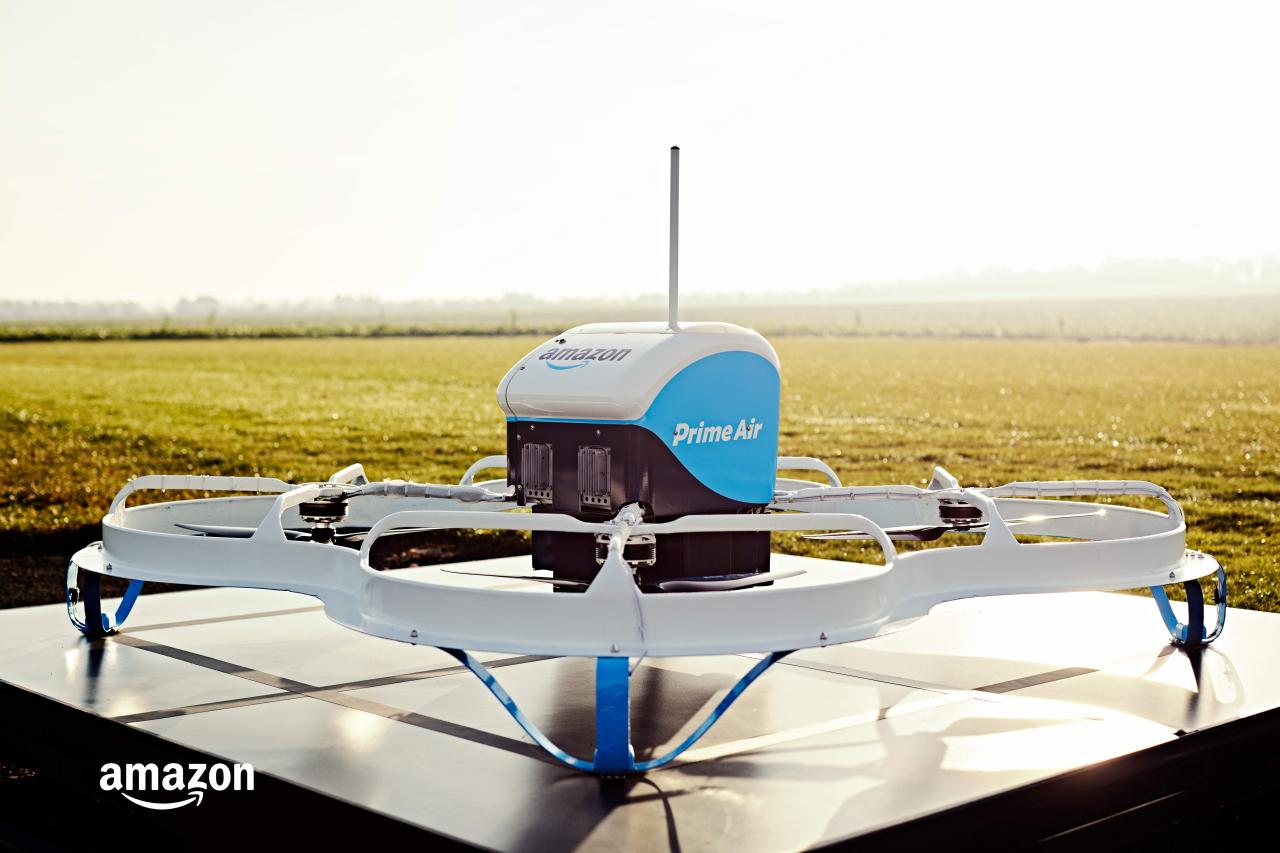
Amazon’s drone delivery program, while innovative, faces significant logistical hurdles in its expansion. Choosing the right locations is crucial for success, requiring careful consideration of various factors that impact operational efficiency and regulatory compliance. The selection process involves a complex interplay of geographical, infrastructural, and environmental elements.Choosing locations for drone delivery isn’t as simple as picking places with lots of people.
Amazon must meticulously evaluate numerous factors to ensure the program’s feasibility and safety. This involves balancing the potential for high delivery volume with the challenges posed by diverse geographical and environmental conditions.
Population Density and Demand
High population density generally translates to higher demand for delivery services. Areas with concentrated residential populations, such as suburban areas or densely populated city sections, offer a larger potential customer base and justify the investment in drone delivery infrastructure. However, densely populated urban areas also present unique challenges, such as airspace congestion and complex navigational environments. Conversely, sparsely populated rural areas might have lower demand, making the operation economically unviable.
A successful location selection strategy balances population density with the overall delivery demand to optimize the cost-benefit ratio.
Infrastructure and Accessibility
Existing infrastructure significantly impacts the feasibility of drone delivery. Reliable internet connectivity is crucial for real-time drone tracking and control. Adequate charging infrastructure is also essential, requiring strategically located charging stations or the ability for drones to return to a central hub for recharging. The availability of suitable takeoff and landing zones (designated areas free from obstacles) is critical for safe and efficient operations.
Furthermore, the presence of existing transportation networks can help with the delivery of packages to the drone delivery hubs. For example, areas with good road networks might be preferred for easier transportation of packages to and from the drone delivery hubs.
So you’re curious about where Amazon’s delivering packages via drone, huh? It’s a pretty cool system, and the rollout is expanding. To get the lowdown on the current locations, check out this helpful resource: amazon drone delivery locations. This will give you a good overview of where Amazon’s drone delivery program is currently operating. Knowing these amazon drone delivery locations helps you see if this futuristic service is available near you.
Regulatory Environment and Airspace Restrictions
The regulatory landscape surrounding drone operations varies significantly across different regions. Amazon must operate within the legal framework of each location, which includes obtaining necessary permits and adhering to airspace restrictions imposed by local authorities and air traffic control. Areas with supportive regulations and clear guidelines for drone operations are more favorable for launching the program. Conversely, locations with restrictive regulations or a lack of clear guidelines can significantly impede deployment and increase operational complexity.
This includes considerations for noise pollution regulations and potential conflicts with other airspace users.
Weather Conditions and Environmental Factors
Weather conditions significantly affect drone delivery operations. High winds, heavy rain, snow, or fog can severely limit flight operations, impacting delivery schedules and potentially causing accidents. Areas with consistently favorable weather conditions are more suitable for drone delivery. Amazon needs to analyze historical weather data and develop contingency plans for adverse weather events. Furthermore, environmental factors such as terrain (mountains, hills) and obstacles (tall buildings, trees) must be considered to ensure safe drone navigation.
The presence of significant natural obstacles may necessitate the development of more sophisticated navigation systems or restrict the deployment of drones in certain areas.
Hypothetical Model for Predicting Optimal Locations
A predictive model for optimal drone delivery locations could incorporate several key factors using a weighted scoring system. The model could assign weights to each factor based on its relative importance to operational success. For instance, population density could receive a higher weight than the presence of a nearby charging station. The model could then calculate a composite score for each potential location, ranking them based on their overall suitability.
This model could use publicly available data (population density, weather patterns, regulatory information) and proprietary data (demand forecasts, infrastructure availability) to provide a quantitative assessment of each location’s potential. For example, a location with high population density, favorable weather, supportive regulations, and good infrastructure would receive a high score, indicating its suitability for drone delivery operations. Conversely, a location with low population density, frequent adverse weather, restrictive regulations, and limited infrastructure would receive a low score.
Customer Experience and Drone Delivery Locations
Amazon’s drone delivery program, while still in its relatively early stages, is shaping customer expectations for speed and convenience. Understanding customer experiences and their relation to chosen delivery locations is crucial for the program’s success. This section will examine customer feedback, the delivery process, and potential improvements to enhance the overall experience.Customer feedback on Amazon’s drone delivery service has been largely positive, focusing on the speed and novelty of the experience.
So you’re curious about where Amazon’s delivering packages via drone? It’s a pretty cool system, and the rollout is happening gradually. To get the lowdown on exactly which areas are currently seeing those futuristic deliveries, check out this helpful resource: amazon drone delivery locations. Knowing these locations helps you understand the future of fast, efficient package delivery.
Amazon drone delivery locations are expanding, so keep an eye on that link for updates!
Many customers express excitement about the futuristic aspect of receiving packages by drone, highlighting the convenience of not having to be home for a delivery. However, some concerns have also been raised regarding the noise level of the drones, the limited range of currently eligible items for drone delivery, and the somewhat restricted delivery zones. For example, one customer review praised the quick delivery but mentioned a slight inconvenience due to the drone’s audible approach.
Another review focused on the limited selection of products available for drone delivery, hoping for a wider variety in the future.
Drone Delivery Ordering and Receiving Process
Ordering a product eligible for drone delivery is similar to standard Amazon orders. Customers select the drone delivery option at checkout if available for their location and chosen items. Once the order is processed, the customer receives notifications regarding the drone’s estimated arrival time. The drone then autonomously flies to the designated delivery location, typically a customer’s backyard.
Upon arrival, the drone lowers the package using a cable system, and the customer is notified via the Amazon app. The package is secured in a container designed to protect it during the delivery process. After the package is safely on the ground, the drone returns to its base. The entire process, from dispatch to delivery, is monitored and tracked by Amazon’s systems, ensuring transparency and accountability.
Drone Delivery vs. Traditional Delivery Times
The following table compares approximate delivery times for drone delivery versus traditional methods (ground shipping) in various locations. These are estimates and may vary based on distance, traffic, and other factors. Data is based on publicly available information and anecdotal evidence.
| Location Type | Drone Delivery (minutes) | Traditional Delivery (hours) | Notes |
|---|---|---|---|
| Suburban Area (close proximity to fulfillment center) | 15-30 | 1-3 | Faster delivery, especially for smaller packages |
| Rural Area (limited access) | 30-60+ (or unavailable) | 24-72+ | Drone delivery may offer an advantage where road access is poor |
| Urban Area (densely populated) | 30-45 | 2-6 | Drone delivery can be faster, but affected by airspace restrictions |
| Remote Area | Unavailable | 72+ | Drone delivery infrastructure is not yet available in many remote locations |
Potential Improvements to Customer Experience
Improving the customer experience with drone delivery requires addressing several key areas. A comprehensive approach focusing on technology, logistics, and communication is vital.
- Expand the range of eligible products: Currently, only smaller, lighter items are suitable for drone delivery. Expanding this range would significantly increase customer convenience.
- Improve drone noise reduction: While the drone’s noise is not excessive in many cases, reducing it further would improve the overall customer experience, especially in residential areas.
- Enhance delivery location options: Providing more flexible delivery locations beyond backyards, such as designated drop-off points, would improve accessibility for customers living in apartments or with limited outdoor space.
- Develop more robust communication systems: Clear and timely notifications regarding order status, drone arrival, and any potential delays are essential for a smooth customer experience.
- Increase delivery area coverage: Expanding the geographic areas served by drone delivery would make this convenient option available to a wider customer base.
Technological Aspects of Amazon Drone Delivery Locations
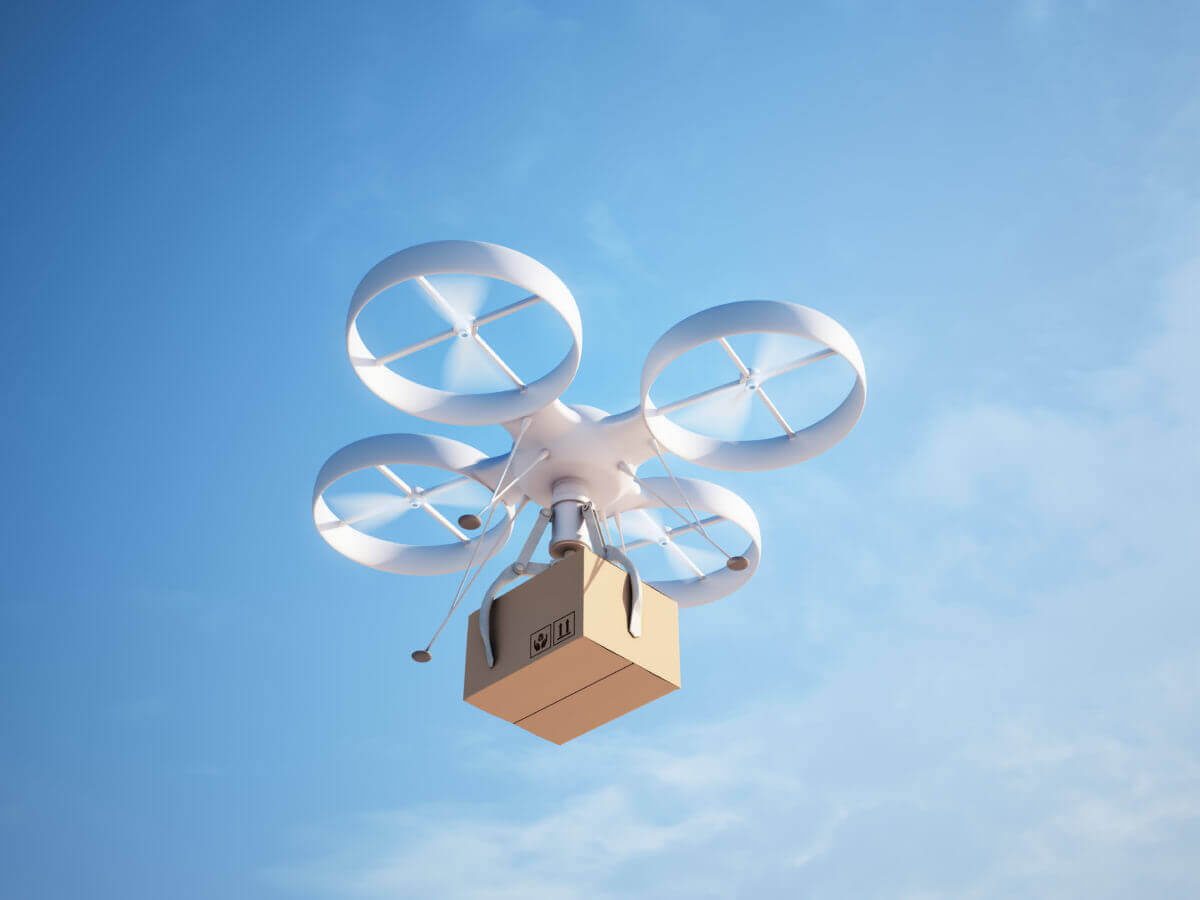
Amazon’s drone delivery program relies on a sophisticated blend of technologies to ensure safe, efficient, and reliable package delivery. This involves advanced navigation systems, robust safety protocols, and comprehensive communication networks, all working in concert to overcome the challenges of autonomous flight and package handling.
Drone Navigation and Package Delivery Technology, Amazon drone delivery locations
Amazon utilizes a combination of GPS, inertial measurement units (IMUs), and computer vision for drone navigation. GPS provides location data, while IMUs track the drone’s orientation and movement. Computer vision, through onboard cameras and advanced algorithms, allows the drone to perceive its environment, identify obstacles, and plan its flight path accordingly. Package delivery involves precision landing mechanisms, often utilizing downward-facing cameras and sensors to pinpoint designated delivery locations, such as customer yards or designated drop-off zones.
The drones themselves are designed with multiple rotors for stability and maneuverability, enabling them to navigate various terrains and weather conditions within their operational parameters. Sophisticated algorithms continuously monitor the drone’s status, making real-time adjustments to the flight path to avoid obstacles and maintain stability.
Safety Features and Protocols for Drone Operations
Safety is paramount in Amazon’s drone delivery operations. Redundant systems are employed throughout the drone’s design and flight software. For example, multiple GPS receivers and IMUs provide backup in case of sensor failure. Automated emergency landing protocols are built into the system, automatically activating if the drone encounters unexpected issues, such as loss of signal or low battery.
Geo-fencing technology restricts drone flight to pre-defined areas, preventing unauthorized departures or entry into restricted airspace. Regular maintenance and inspections are conducted to ensure the drone’s airworthiness and operational safety. Furthermore, Amazon employs sophisticated obstacle avoidance systems that integrate data from multiple sensors to identify and react to potential hazards in real-time. These systems, combined with fail-safe mechanisms, are designed to minimize the risk of accidents.
Communication Systems for Drone Flight Management and Monitoring
Real-time communication is crucial for managing and monitoring Amazon’s drone fleet. A dedicated communication network, utilizing both cellular and radio frequency technologies, allows for constant communication between the drones and Amazon’s ground control systems. This enables real-time tracking of drone location, status, and flight data. The system also facilitates remote control interventions if necessary, allowing operators to take over manual control in emergency situations.
Data from each flight is meticulously logged and analyzed to improve operational efficiency and identify potential areas for improvement in the system’s safety and performance. This data-driven approach is fundamental to ongoing improvements in the technology and operational procedures.
Technological Advancements Compared to Competitors
Amazon’s drone technology is at the forefront of the industry, constantly evolving. While specific details of competitor technologies are often proprietary, Amazon’s focus on fully autonomous delivery, coupled with its significant investment in artificial intelligence and machine learning, sets it apart. Competitors may focus on different aspects, such as specialized drone designs for specific environments or delivery methods, but Amazon’s approach emphasizes a scalable, versatile system capable of handling a wide range of delivery scenarios.
The company’s integration of its drone program with its existing logistics infrastructure gives it a considerable advantage. This integration streamlines the overall delivery process, offering a seamless transition from warehouse to customer doorstep. Continuous improvements in battery technology, sensor accuracy, and AI-driven flight planning further solidify Amazon’s leading position in this rapidly developing field.
Environmental Impact of Drone Delivery Locations
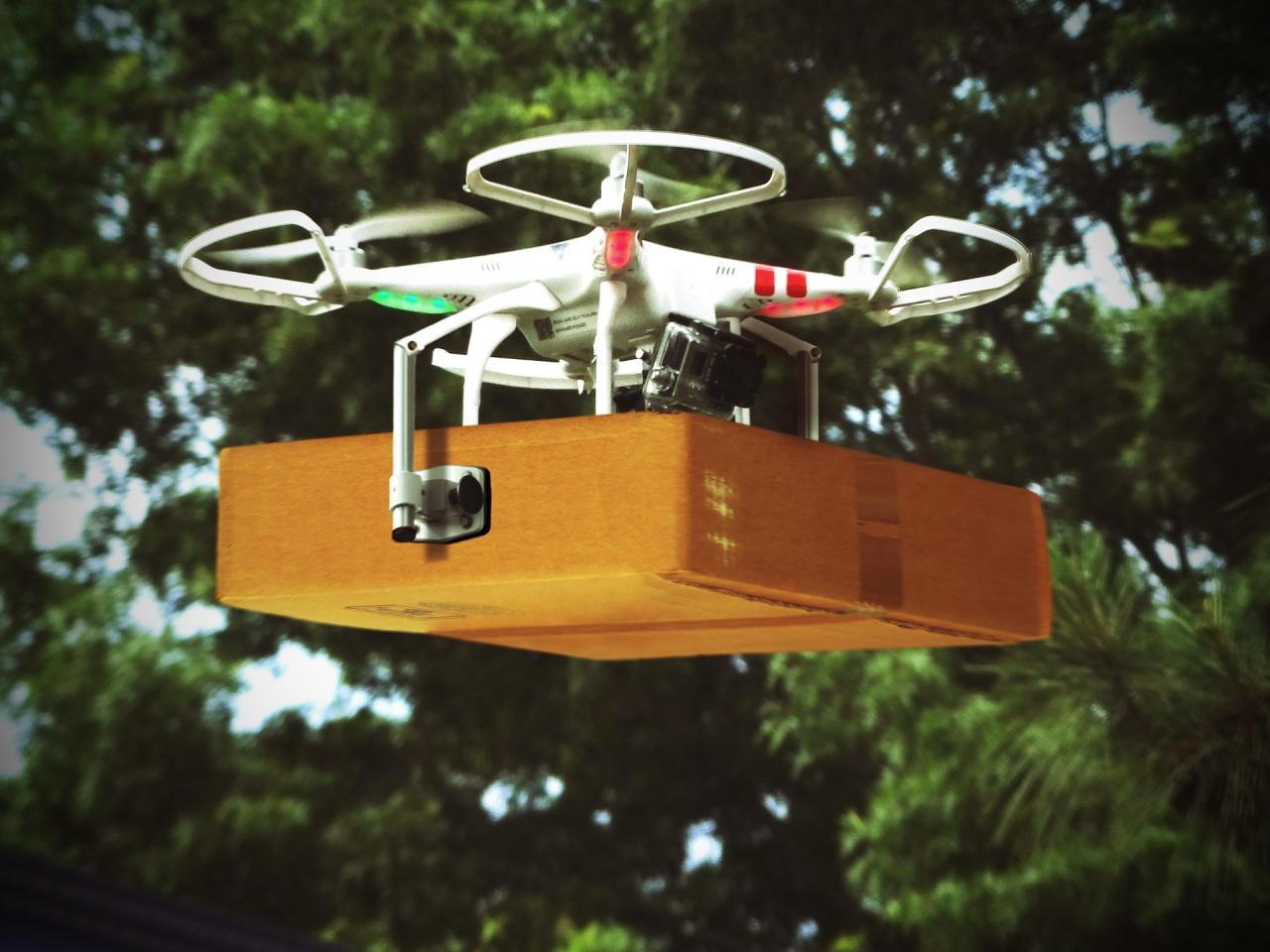
Drone delivery, while offering speed and convenience, presents a complex environmental picture. Weighing the benefits against the drawbacks requires a careful consideration of energy consumption, noise pollution, and the overall carbon footprint compared to traditional delivery methods. This section will explore these aspects in detail, focusing on the environmental implications of establishing and operating Amazon drone delivery locations.
Noise Pollution from Drone Delivery Operations
The buzzing sound of drones, especially during frequent deliveries, can contribute to noise pollution in residential areas. The intensity and frequency of this noise depend on factors like drone model, flight altitude, and the volume of deliveries. Studies in urban environments have shown that consistent drone noise can negatively impact residents’ quality of life, leading to stress and sleep disturbance.
Mitigation strategies such as optimized flight paths and noise-reducing drone designs are crucial to minimizing this impact. The cumulative effect of numerous drones operating simultaneously in a delivery hub could potentially create a significant noise problem. Regulations and zoning restrictions around drone delivery locations could play a vital role in controlling this.
Energy Consumption of Amazon’s Drones
Amazon’s drones, like all aircraft, require energy for propulsion and onboard systems. The energy source is typically a battery, and the energy consumption varies depending on factors like drone size, payload weight, flight distance, and weather conditions. While electric drones offer a cleaner alternative to fuel-powered vehicles, their battery production and disposal present environmental challenges. The manufacturing process of these batteries requires significant energy and resources, and improper disposal can lead to pollution.
Amazon’s efforts to optimize drone design for energy efficiency and implement sustainable battery recycling programs are key to reducing the overall environmental footprint. Data on the precise energy consumption per delivery is not publicly available, but estimates suggest a lower energy consumption per package compared to traditional delivery trucks, especially for shorter distances.
Environmental Footprint of Drone Delivery: A Visual Representation
Imagine a pie chart. One section, the largest, represents the environmental impact of traditional delivery trucks – encompassing fuel consumption, emissions (CO2, NOx, particulate matter), and vehicle manufacturing. A smaller segment shows the environmental impact of drone delivery, subdivided into smaller slices. One slice depicts battery production and disposal; another represents the energy consumption during flight; a third, smaller slice accounts for drone manufacturing and eventual disposal.
The comparison visually highlights that while drone delivery isn’t entirely emission-free, its environmental footprint could be significantly smaller than that of traditional methods, particularly for shorter-distance deliveries. However, the overall impact depends heavily on the scale of operations and the sustainability of battery production and disposal processes. A further slice might represent the potential for increased noise pollution.
The size of this slice would be relative to the effectiveness of noise mitigation strategies.
Future of Amazon Drone Delivery Locations
Amazon’s drone delivery program is still in its relatively early stages, but its potential for growth is immense. Over the next five years, we can expect to see a significant expansion of their delivery network, driven by technological advancements and evolving regulations. This expansion will reshape both the types of locations suitable for drone delivery and the overall impact of the service.Predicting the exact scale of expansion is challenging, but considering Amazon’s investment and the growing demand for faster delivery options, a reasonable projection would be a tenfold increase in operational locations within five years.
This would likely involve moving beyond the current pilot programs and establishing larger-scale drone delivery hubs in more densely populated areas, particularly suburban and exurban communities. We might also see a diversification of delivery locations, including partnerships with existing infrastructure like retail stores and distribution centers.
Technological Advancements and Future Locations
Technological improvements will play a crucial role in shaping the future of Amazon drone delivery locations. For example, advancements in battery technology will extend flight ranges, enabling drones to serve larger areas from fewer launch points. Improvements in autonomous navigation systems and sensor technology will increase the safety and reliability of drone operations in more complex environments, such as urban areas with high-rise buildings and dense air traffic.
This will allow for drone delivery to expand into previously unsuitable locations. Imagine drones capable of navigating autonomously through city centers, avoiding obstacles and delivering packages directly to customers’ doorsteps – this is a realistic possibility within the next five years. The development of more resilient and weather-resistant drones will also broaden the range of locations where operations are feasible.
Challenges and Opportunities for Global Expansion
Expanding drone delivery globally presents both significant challenges and opportunities. One major challenge is regulatory differences across countries. Some nations have strict regulations regarding airspace usage and drone operations, while others are more open to innovation. Navigating these varying regulatory landscapes will be crucial for Amazon’s success. Opportunities lie in addressing the last-mile delivery challenges in underserved areas with limited road infrastructure, particularly in developing countries.
Drone delivery can provide a cost-effective and efficient solution in these regions, bringing essential goods and services to communities that are otherwise difficult to reach. However, successful global expansion will require significant investment in infrastructure, training, and logistics.
Impact of Changing Regulations on Location Selection
Regulations surrounding drone delivery are constantly evolving. Changes in airspace management, licensing requirements, and safety standards will directly influence the selection of suitable drone delivery locations. For example, the establishment of designated drone corridors or airspace zones specifically for drone operations could dramatically expand the number of suitable locations, especially in urban areas. Conversely, stricter regulations regarding noise pollution or proximity to sensitive areas (such as hospitals or schools) could limit the potential locations for drone delivery operations.
Amazon will need to adapt its location strategies to comply with these evolving regulations and to demonstrate the safety and reliability of its drone delivery system to regulators and the public. This will likely involve working closely with governments and regulatory bodies to develop appropriate guidelines and best practices.
Epilogue
Amazon’s drone delivery program is more than just a futuristic concept; it’s a rapidly evolving reality reshaping the landscape of e-commerce. While challenges remain—from regulatory hurdles to environmental concerns—the potential benefits, including faster delivery times, reduced carbon emissions, and enhanced customer convenience, are undeniable. As technology advances and regulations adapt, we can expect to see an even greater expansion of Amazon drone delivery locations in the years to come, transforming the way we receive our online purchases.
Expert Answers
What types of packages can be delivered via Amazon drones?
Currently, Amazon drones deliver smaller, lighter packages. The specific size and weight limits may vary depending on location and drone model.
How much does drone delivery cost?
Drone delivery costs are usually similar to or slightly higher than standard shipping costs. The exact price depends on the item’s weight, distance, and other factors.
Is drone delivery available everywhere?
No, Amazon drone delivery is currently limited to specific locations. The service is expanding gradually as infrastructure and regulations allow.
What happens if the drone encounters bad weather?
Amazon’s drone delivery system is designed to detect and avoid bad weather. If conditions become unsafe, the delivery will be postponed, and the customer will be notified.
